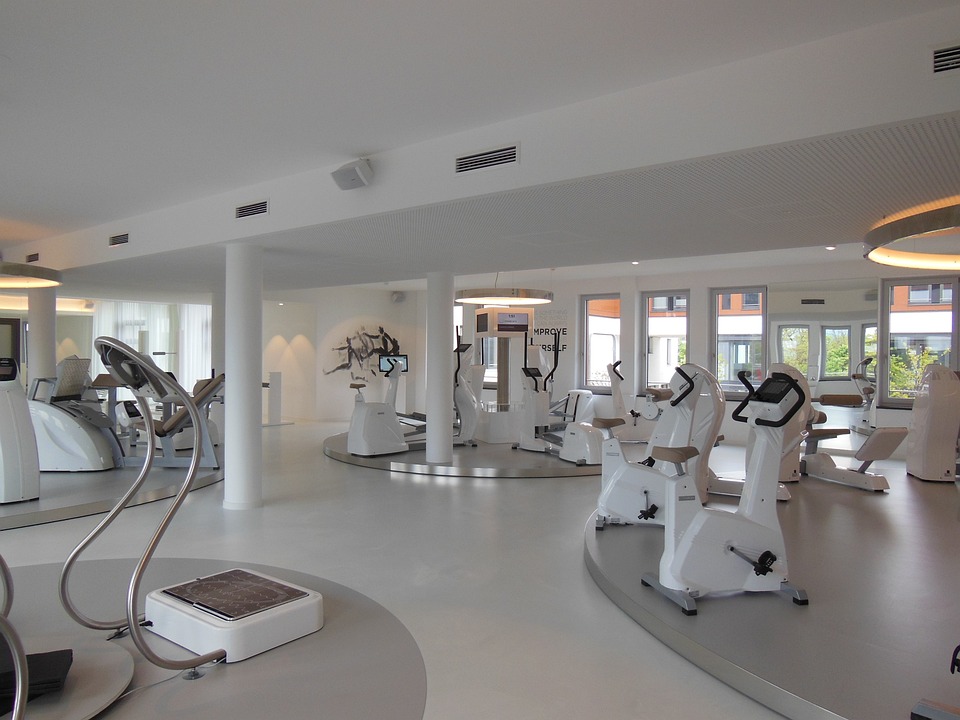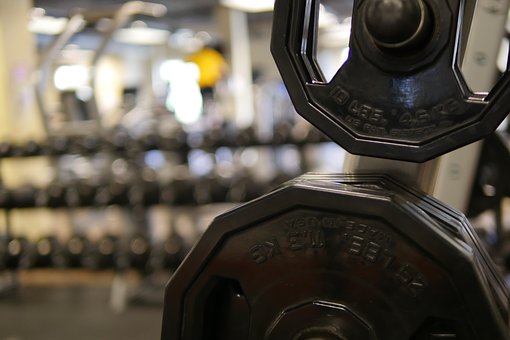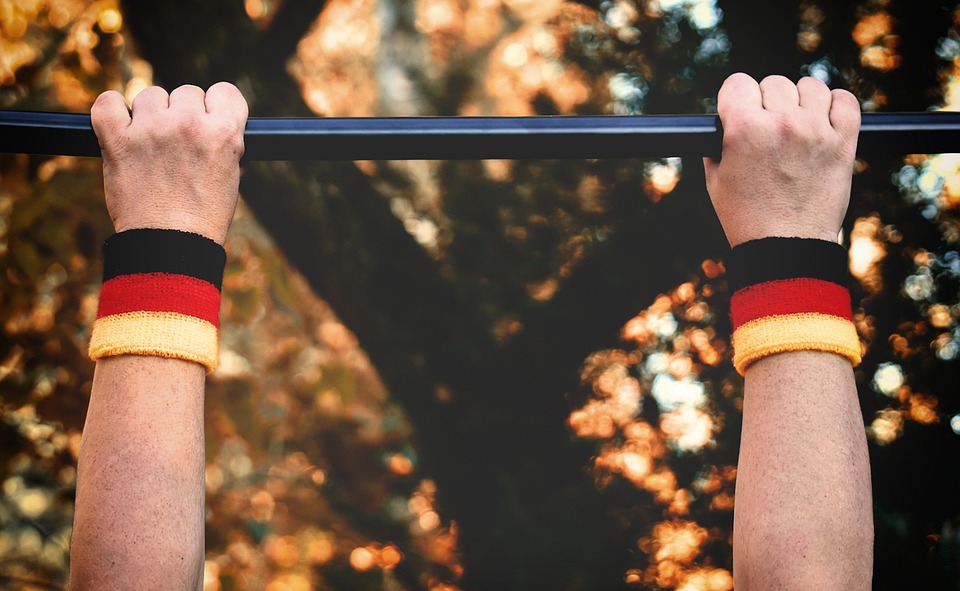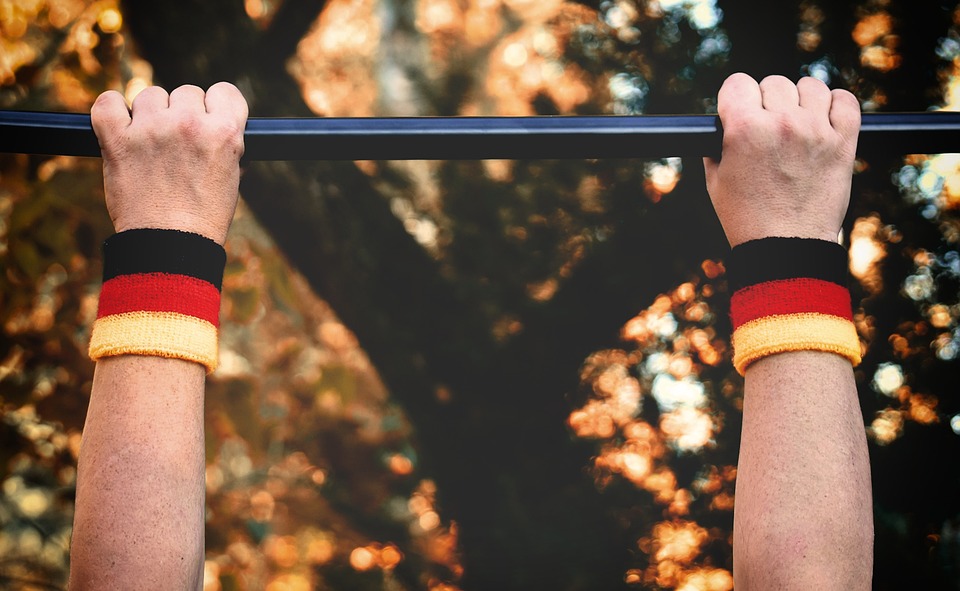
Some people say that hanging knee raises and hanging leg raises are two of the best exercises for working your abs.
The straight leg raise is very difficult and is similar to pull-ups which most people are not able to do the first time they try. The hanging knee raise is a good exercise to start with because it is easy to do.
What is a hanging knee raise? The exercise known as hanging knee ups, hanging knee lifts or bent-knee leg raises is done by hanging from an overhead pull-up bar and lifting up your knees until they are in front of your chest. You can use ab slings instead of holding on to the bar with your hands.
When it comes to training the midsection, people often split the exercises into two categories: functional core exercises and direct abdominal exercises. Having a specific goal in mind should be your main priority when choosing exercises, rather than which category of training they fit into. Some exercises can be beneficial for both types of training.
Advantages
What are hanging knee raises good for? This exercise is popular among bodybuilders because it allows you to work the rectus abdominis muscle directly, which brings out the six-pack abs look. This exercise also effectively targets the lower abs.
The slings are more comfortable to use than hanging by your hands, and you don’t have to worry about your grip failing before your abs.
Disadvantages
Knee raises while hanging is easier than straight leg raises while hanging, but this is still a challenging exercise and is best suited for experienced trainees.
Even though the resistance is reduced due to the shorter lever arm (legs bent instead of legs straight), it’s still a challenge because you have to use your abs and core muscles extra hard to stabilize yourself and prevent your body from swinging.
Equipment Needed for Hanging Knee Raises
A hanging knee raise can be performed with an overhead pull-up bar, and the sling-supported version is done with the help of ab slings (which are highly recommended).
I recommend that you invest in your own pair of slings because the community slings at the gym have been under many sweaty armpits. There are low-cost slings available, but be cautious of the extremely Cheap ones because they may rip or break.
How to Perform the Hanging Knee Raise
The movement can also be done using a TRX suspension trainer The hanging knee raise is a workout that can be done using a pull-up bar or TRX suspension trainer. To do this exercise, the only things you need are the strength to grip a bar for a long time and pain-free mobility in your shoulders.
Step 1 – Get Your Grip
Place your hands directly above your head and raise them so that they are comfortable. Typically, you want to grip the barbell with your hands about shoulder-width apart, or slightly wider.
Step 2 – Set and Hang
Allow a few moments to pass in a dead hang to reduce any swaying that may occur from the initial momentum of grabbing the bar. To do a body hollow, set your shoulder blades back and down and squeeze your legs together. When you are preparing to do a barbell exercise, brace your core in the same way.
Step 3 – Flex the Abs
For each repetition of the hanging knee raise, squeeze your abs at the top of the movement so that your hips are flexed beyond 90 degrees. To target your abs, you need to flex your spine. Imagine you’re doing a sit-up and engaging your abs to bring your knees toward your chest.
Step 4 – The Reset
Slowly lower your legs back to the starting position while keeping your muscles engaged. The more core tension you release, the more swaying or loss of position you will experience between repetitions.
Muscles Worked by the Hanging Knee Raise
The hanging knee raise is mostly a core exercise. In other words, one of the main things to consider when trying to improve your performance with this technique is also directly related to another big muscle group involved in the execution.
Rectus Abdominis
The rectus abdominis muscle, also known as the abs, is the primary muscle used in this exercise. The abdominals attach the ribs to the pelvis and enable the torso to bend, twist, and generally move. The knee raise is a difficult exercise that requires the person to pull on the pelvis as the legs elevate in space.
Hip Flexors
If the hip flexors are engaged during the hanging knee raise, it is considered a performance error. Although it’s not the most important thing to note, it’s worth mentioning that if you only feel a pinch or pull in your hip when doing knee raises, it’s probably because your hip flexors are doing the work that should be done by your lower abs.
Who Should Do the Hanging Knee Raise
The hanging knee raise is a great exercise for people who want to improve their physical appearance, strength, and stamina.
Physique Athletes
Physique athletes are constantly trying to find different exercises to make each body part look slightly bigger from different angles. The hanging knee raise is a great addition to the standard crunch for developing the six-pack, but it also provides a slightly different challenge.
Strength Athletes
The hanging knee raise is beneficial for strength athletes for many reasons, the first being that it reinforces proper bracing technique. The hanging knee raise is an effective exercise because it eliminates momentum. This means that it would be beneficial for strength athletes because it would help them with their heavy lifting.
Average Gymgoers
Most gym-goers are trying to achieve more than one goal at a time. Overhead mobility and stability, grip strength, body awareness, and the core all improve while performing the hanging knee raise.
However, they can also be enjoyable to use as a way to perform many different kinds of calisthenic exercises, like the weighted pull-up, in the future.
Hanging Knee Raise Sets, Reps, and Programming Recommendations
If you want to functionally train your core and directly target your abdominals at the same time, hanging knee raises are an effective way to do so. However, recommendations may vary depending on your fitness level.
Recommendations for Newer Trainees
If you are new to this exercise, you may not be able to do it because you are not strong enough, skilled enough, or have enough endurance. Doing hanging knee raises at the beginning of a workout, or on a day when you focus on core exercises, can be helpful.
Start with two to three sets of six to eight repetitions, focusing on perfecting your technique for each workout until you’re able to do more reps.
Recommendations for Intermediate Trainees
If you’re an intermediate trainee who can routinely do hanging knee raises and you’re looking to build muscle, targeting a set and repetition scheme would be the most beneficial.
Do 10-15 reps three or four times a week in sets of three or four.
Recommendations for Advanced Trainees
If you’re having trouble keeping resistance steady while doing hanging knee raises, you’re probably either using too much momentum or straining your hip flexor muscles. A better solution for advanced trainees would be to do more repetitions.
Repeat the exercise three to four times, 15 to 20 times each, several times a week. Or, try holding a light dumbbell between your ankles and doing fewer, stricter repetitions.
Hanging Knee Raise Variations
There are different ways to do the hanging knee raise, which can be part of a workout circuit or set, or help you build up to being able to do the hanging knee raise.
Roman Chair Knee Raise
The Roman chair knee raise helps people who can’t do a hanging knee raise yet by giving them back and arm support. The backrest supports your body so you don’t have to worry about losing your position, and the armrests take away the need to use your arms to hold yourself up, so you can focus on contracting your abs.
Hanging Straight-leg Raise
The hanging straight-leg raise is more challenging than the hanging knee raise because it extends the lever acting against the abdominals. The harder your feet have to work in order to flex the spine, the longer the distance they are away from your core muscles.
Hanging Knee Raise Alternatives
The hanging knee raise exercise is designed to specifically target the abdominal muscles, while also teaching the correct way to engage the muscles of the core. There are other exercises that can help achieve the same goals as the hanging knee raise, such as the lying knee raise, lying leg raise, and gymnastic ring knee raises.
Lying Knee Raise
Lie on the ground with your palms down and your back flattened against the floor. While contracting your abdominals, draw your knees toward your chest.
Lying Leg Raise
Lying on your back with your palms down on either side of your body, flatten your lower back into the floor. Lift your legs toward the ceiling until your body is at a 90-degree angle and your legs are perpendicular to the floor.
Gymnastic Ring Knee Raise
While hanging from two independent gymnastic rings, bring your knees up to your chest while keeping your back straight. This will place an increased emphasis on core and shoulder stability in order to complete the movement with proper form.
Training Tips
The best way to get the most out of hanging knee raises is to use a full range of motion. If your thighs are parallel to the floor and you only lift your legs to waist height, your hip flexors will do most of the work and your abdominals will not be fully engaged. To engage your abs more fully, raise your knees until they are level with your chest.
It can be difficult to do this exercise without swaying your body, but you will get better at it with practice as your abdominal muscles become stronger. You can do this exercise faster than the usual tempo, as long as you develop a rhythm of lifting and lowering. This way, you can use some momentum without swinging uncontrollably.
I suggest doing 3 sets of between 10 to 25 reps. Don’t worry about not being able to do 10 reps at first, just do as many as you can. Set a goal to increase your reps over time. The abdominals can be trained with the normal amount of repetitions for hypertrophy, but they also respond well to a higher number of repetitions. Stop doing very high reps of 30, 40, and beyond when you can do 20 or 25 reps easily, and advance to the more difficult straight leg raise variation.
Safety and Precautions
Because you are bending your knees in this leg raise, there is less strain on your lower back. If you do this movement with poor form, it can aggravate low back pain in people who are already susceptible to it. Stopping to rest if you feel low back pain is key in order to prevent injury. Try an easier ab exercise like the support leg raise or the reverse crunch.
Progressions (Make It Harder Or Add Intensity)
The next level up from the hanging knee raise is the hanging straight leg raise. Do not move on to the next exercise until you can do the hanging knee-up with perfect form. Once you feel more comfortable with hanging knee-ups, then you can progress to hanging straight leg raises.
The best way to do hanging leg raises is to add hanging knee-up supersets. The “killer abs combo” is a difficult version of the straight leg raise followed by the hanging bent knee up. Even when you start to tire on the straight leg raise, you’ll find you have the strength to keep going for more reps on the second exercise.
Do two exercises in a row without stopping, then rest for a minute or two. Repeat this two more times. If you keep doing what you’re doing for a month or two, and gradually increase the number of reps you do, you’ll have a six-pack that everyone at the gym will be jealous of!
Frequently Asked Questions
We’ll answer some common questions about the leg raise movement.
Are hanging knee raises safe to perform?
Yes! To ensure the hanging knee raise is safe and effective, there are certain requirements that each exercise must meet. The hanging knee raise exercise is only recommended for people who can put their arms over their heads and hang safely without any pain.
How often should I train the hanging knee raise?
This varies depending on how long the person has been training and how many other core exercises they are doing. If you don’t do many exercises that require free weights, you may be able to do the hanging knee raise more often than someone who does a lot of exercises that require lifting bars or weights.
The hanging knee raise is a great exercise for targeting your lower abs, but you may want to add weight to the exercise to make it more challenging. To do this, simply hold a dumbbell between your feet as you perform the exercise.
This one is tricky. To increase the intensity of many exercises, you would usually add more weight. However, hanging knee raises could target different muscles. If you want to work your abs without using your hip flexors, it can be tough. We recommend doing more reps or hanging leg raises.














